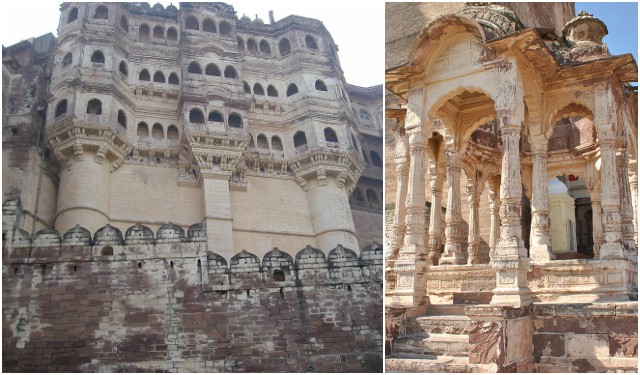Located on top of a cliff, above the skyline of Jodhpur, Rajasthan, the Mehrangarh Fort is one of the largest and best-preserved citadels in India.
Built in the 15th century, around 1460, by Rao Jodha, this magnificent castle, described by Rudyard Kipling as “the Work of Giants” it’s truly a marvel and an astonishing architectural achievement. The foundation stone was laid down by Shri Karni Mata, a famous female Hindu warrior of the Charan clan.
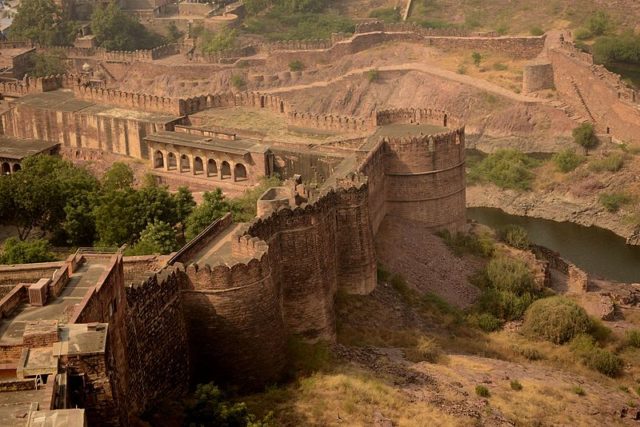
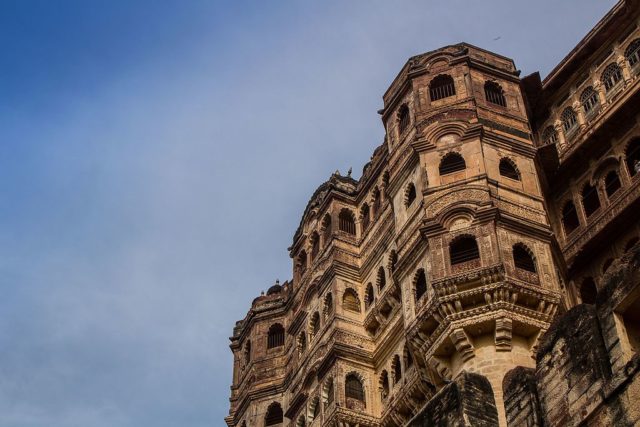
Rao Jodha was the fifteenth ruler of the Rathore clan, and one of Ranmal’s 24 sons. And the name Mehrangarh literally means citadel of the sun, based on the deity of the Rathore clan.
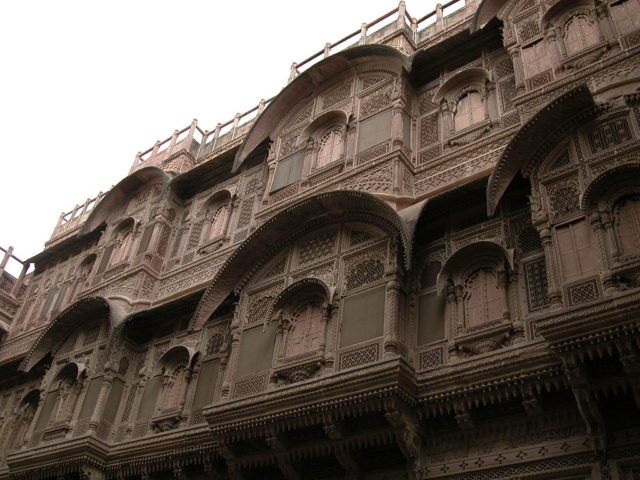
The fortress is really imposing to look and it shows how in those unstable times, a fort like Mehrangarh represented an object of great power and prestige. Placed within massive thick walls there are several brilliantly crafted and decorated palaces inside its boundaries.
They are known for their intricate carvings and expansive courtyards and they were built specifically for the rulers and their wives. Some of them are the Moti Mahal (Pearl Palace), Phool Mahal (Flower Palace) and the Sheesha Mahal (Mirror Palace).
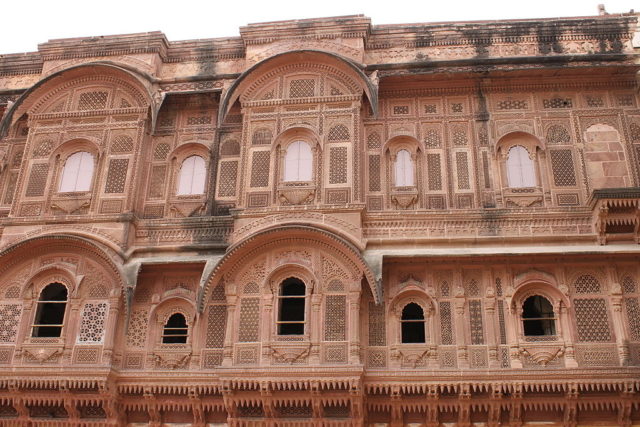
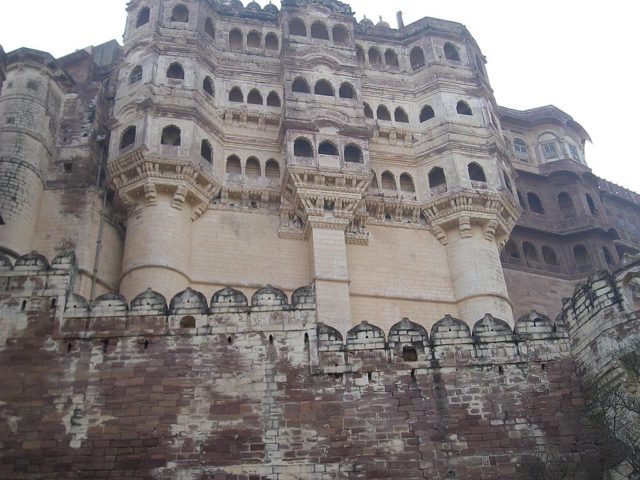
The vast complex also houses the royal temples which once served as places of worship for the Rathore dynasty, and it supports a center for the arts, music, literature. The most famous shrine is the historic Nagnechiji temple, located on the extreme right of the fort complex. Next to it is the Chamunda Devi temple, dedicated to Durga, the goddess that was destroyed by a gunpowder explosion in the 18th century and later reconstructed by the ruler Takhat Singh.
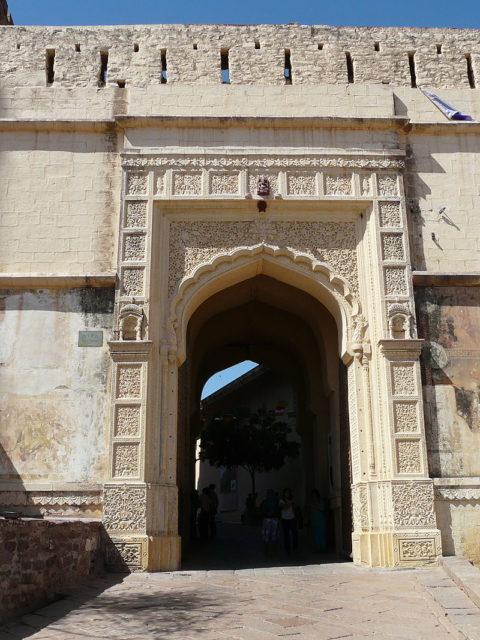
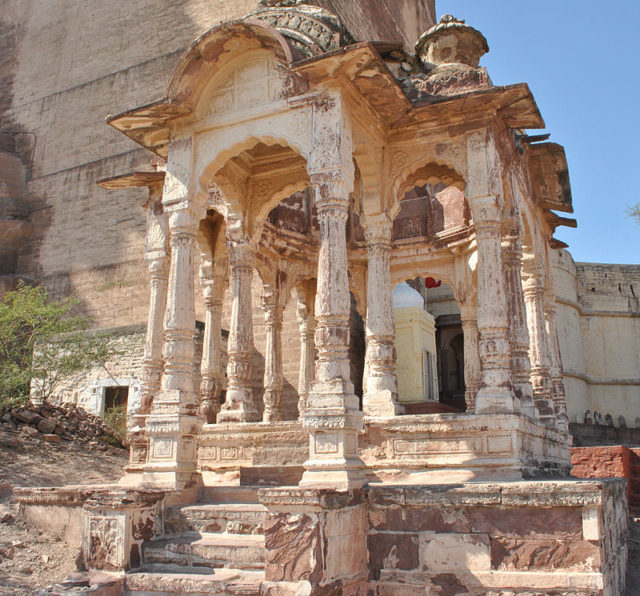
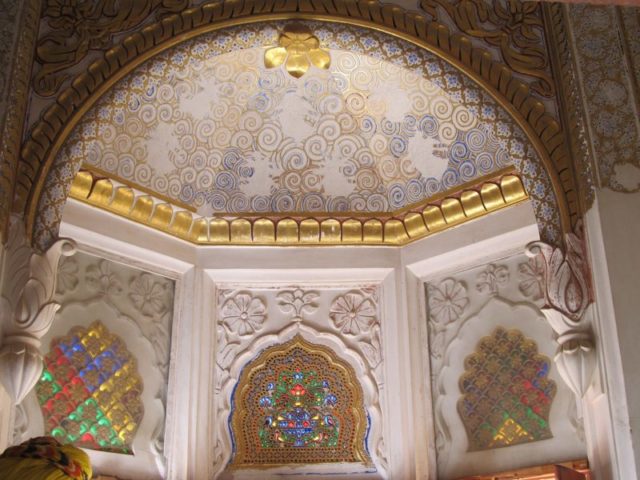
A very convoluted road leads to the fort and there are seven doors to enter in the complex, the main entrance being the northeast gate, Jai Pol (“Gate of Victory”). It was built by Maharaja Man Singh in 1808 following his defeat of invading forces from Jaipur.
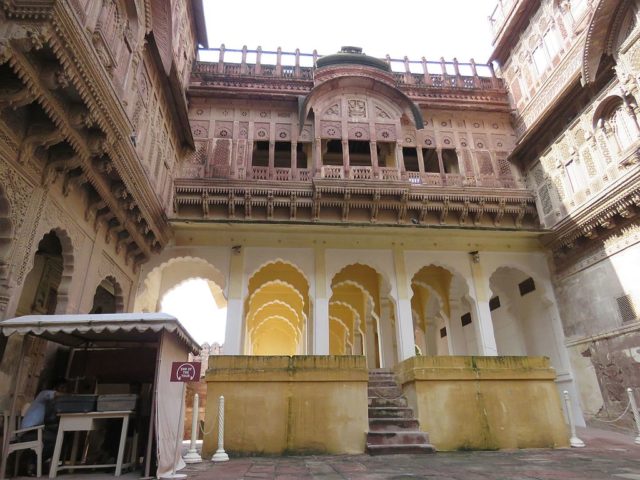
Today, the Mehrangarh fort is still run by the Jodhpur royal family. Visitors who come into the estate don’t need to buy a ticket and they can freely walk and explore around the complex. Tickets are only reserved for the museum section of the fortress. Because of its long history and heritage, the Mehrangarh museum is considered to be the most stocked museum in Rajasthan. It has all kind of antiques, from musical instruments, costumes, and furniture, to authentic howdahs and palanquins.
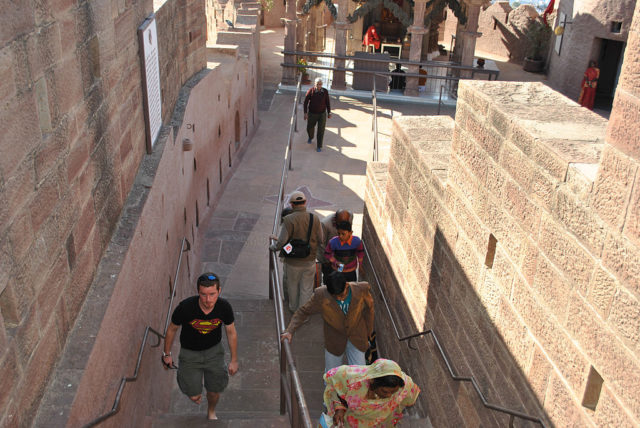
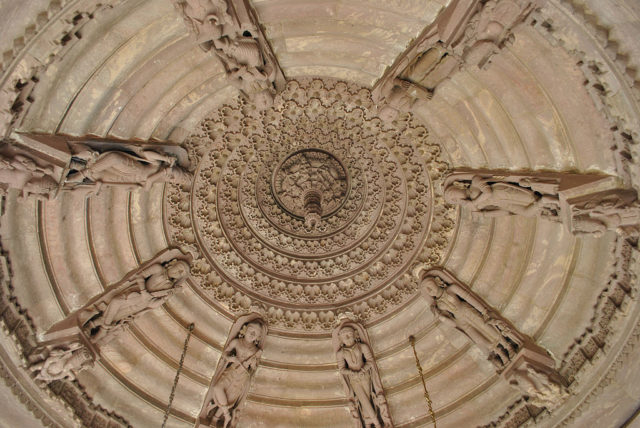
There is also a gallery that displays the finest example of Marwar paintings, armory gallery, and a turban gallery. One of the most popular tourist attraction is The Chamunda Mataji Temple, a 15th-century temple dedicated to the Chamunda Devi goddess.
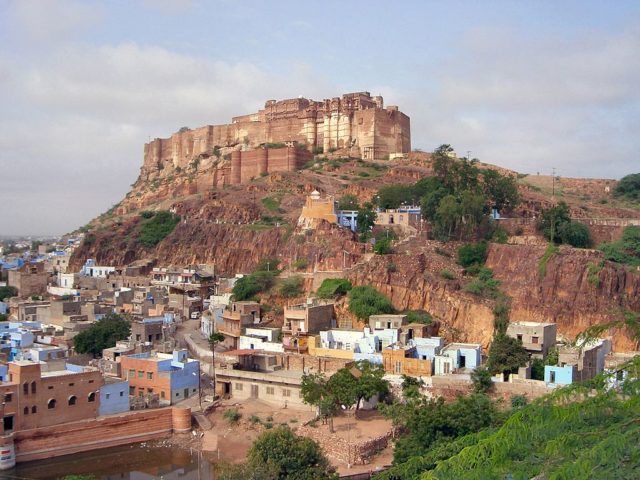
In this temple, a tragedy ensued on 30 September 2008, when a human stampede killed 224 people and more than 425 were injured. Also, the fort was one of the filming locations of Nolan’s The Dark Knight Rises and most recent as a recording session between Israeli composer Shye Ben Tzur and Radiohead guitarist Jonny Greenwood, documented in the Paul Thomas Anderson film, Junun.
